
Paralympic alpine skiing is an adaptation of alpine skiing for athletes with a disability. The sport evolved from the efforts of disabled veterans in Germany and Austria during and after the Second World War. The sport is governed by the International Paralympic Committee Sports Committee. The primary equipment used includes outrigger skis, sit-skis, and mono-skis. Para-alpine skiing disciplines include the downhill, super-G, giant slalom, slalom, super combined, and snowboard.
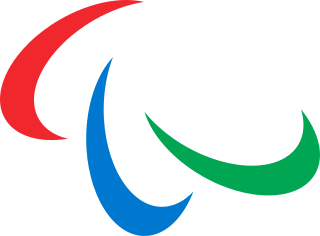
The Winter Paralympic Games is an international multi-sport event where athletes with physical disabilities compete in snow and ice sports. The event includes athletes with mobility impairments, amputations, blindness, and cerebral palsy. The Winter Paralympic Games are held every four years directly following the Winter Olympic Games and hosted in the same city. The International Paralympic Committee (IPC) oversees the Games. Medals are awarded in each event: with gold for first place, silver for second, and bronze for third, following the tradition that the Olympic Games began in 1904.

The United Kingdom of Great Britain and Northern Ireland competed at the 1992 Winter Paralympics held in Tignes and Albertville, France. The team was known by it shortened name of Great Britain, for identification purposes.

Henrieta Farkašová is a retired Slovak alpine skier, eleven-time Paralympic champion and seventeen-time world champion in the B3 (classification) category.
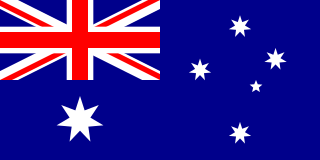
Following the success of the first ever 1976 Winter Paralympics in Örnsköldsvik four years earlier, Norway was selected to host the Paralympic Games in 1980.

The 1994 Winter Paralympics were held in Lillehammer, Norway. Australia sent six male skiers, who won three gold, two silver and four bronze medals. Australia, at the time, achieved their best ever performance at a Winter Paralympics, finishing 5th overall in the alpine skiing competition, 9th in the medal standings, and 11th in the total medal count out of 31 nations.
Para-alpine skiing classification is the classification system for para-alpine skiing designed to ensure fair competition between alpine skiers with different types of disabilities. The classifications are grouped into three general disability types: standing, blind and sitting. Classification governance is handled by International Paralympic Committee Alpine Skiing. Prior to that, several sport governing bodies dealt with classification including the International Sports Organization for the Disabled (ISOD), International Stoke Mandeville Games Federation (ISMWSF), International Blind Sports Federation (IBSA) and Cerebral Palsy International Sports and Recreation Association (CP-ISRA). Some classification systems are governed by bodies other than International Paralympic Committee Alpine Skiing, such as the Special Olympics. The sport is open to all competitors with a visual or physical disability. It is not open to people with intellectual disabilities.
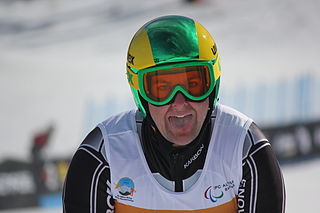
LW1 is a para-alpine standing skiing classification for people with severe lower extreme disabilities in both extremities. It includes both skiers with amputations and cerebral palsy. International classification is done through IPC Alpine Skiing, and national classification through local national sport federations. LW1 classified skiers use outriggers, and two skis or one ski with a prosthesis. Other equipment is used during training such as ski-tips, ski-bras, and short skis.
LW3 is a para-alpine and para-Nordic standing skiing sport class defined by the International Paralympic Committee (IPC) for skiers with a disability affecting both legs, with double below knee amputation or a combined strength total for both legs of 60, with 80 as the baseline for people without disabilities. For international skiing competitions, classification is done through IPC Alpine Skiing or IPC Nordic Skiing. The classification has two subclasses for para-alpine skiing: LW3.1 which is for people with double below the knee amputations or similar disabilities, and LW3.2 which is for people with cerebral palsy that involves moderate athetoid, moderate ataxic impairment or slight diplegic involvement.

Armenia sent a delegation to compete at the 2014 Winter Paralympics in Sochi, Russia from 7–16 March 2014. This was the nation's fifth appearance at a Winter Paralympic Games. The delegation consisted of a single alpine skier, Mher Avanesyan, who lost both arms as a child after coming into contact with a high-voltage electrical wire. In the men's standing slalom he came in 34th place out of 35 competitors who finished the race, and he failed to finish the giant slalom.
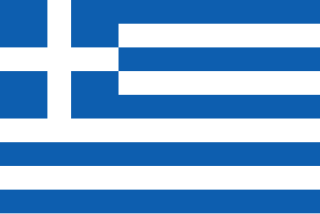
Greece sent a delegation to compete at the 2014 Winter Paralympics in Sochi, Russia from 7–16 March 2014. This was Greece's third appearance at a Winter Paralympic Games. Their only athlete was alpine skier Efthymios Kalaras. He suffered a spinal cord injury two decades before these Paralympics, and was a returning Paralympic silver medalist from the 2004 Summer Paralympics in the discus throw. He finished 22nd in the sitting giant slalom, nearly a minute behind the gold medal time.
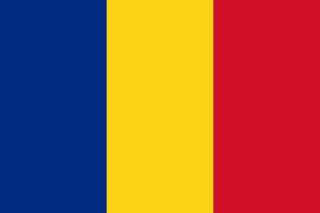
Romania competed at the 2014 Winter Paralympics in Sochi, Russia, held between 7–16 March 2014. This was Romania's second appearance at a Winter Paralympic Games. The Romanian delegation consisted of one alpine skier, Laura Valeanu, who finished fifth in the slalom and seventh in the giant slalom.

Anna-Lena Forster is a German para-alpine skier who competed at the 2014, 2018 and 2022 Winter Paralympics winning six medals.

The Netherlands sent a delegation to compete at the 2014 Winter Paralympics in Sochi, Russia, held between 7–16 March 2014. The Netherlands delegation consisted of seven competitors, all of which were competing in sports under the alpine skiing banner. Bibian Mentel won the nation's only medal at these Paralympics, a gold in women's snowboard cross. With one gold medal, the Netherlands ranked a joint 14th place on the medal table with Switzerland.
Ursula Steiger is an Austrian para-alpine skier. She represented Austria at the 1976 Winter Paralympics and at the 1980 Winter Paralympics. In total, she won one silver medal and three bronze medals in alpine skiing.
Sarah Billmeier is an American para-alpine skier. She represented the United States in alpine skiing at the 1992, 1994, 1998 and 2002 Winter Paralympics. In total she won seven gold medals, five silver medals and one bronze medal.
Roni Sasaki is an American para-alpine skier. She represented the United States at the 1992 Winter Paralympics in alpine skiing. She was born with one leg and she competed in LW2-classification events.
Cathy Gentile-Patti is an American para-alpine skier. She represented the United States in alpine skiing at the 1992 Winter Paralympics held in Tignes and Albertville, France.
Barbara Aigner is an Austrian visually impaired para alpine skier who competed at the 2022 Winter Paralympics.
Maria Sund is a Swedish paralympic alpine skier. She represented Sweden at the 1992 Winter Paralympic Games. She won a silver medal.










